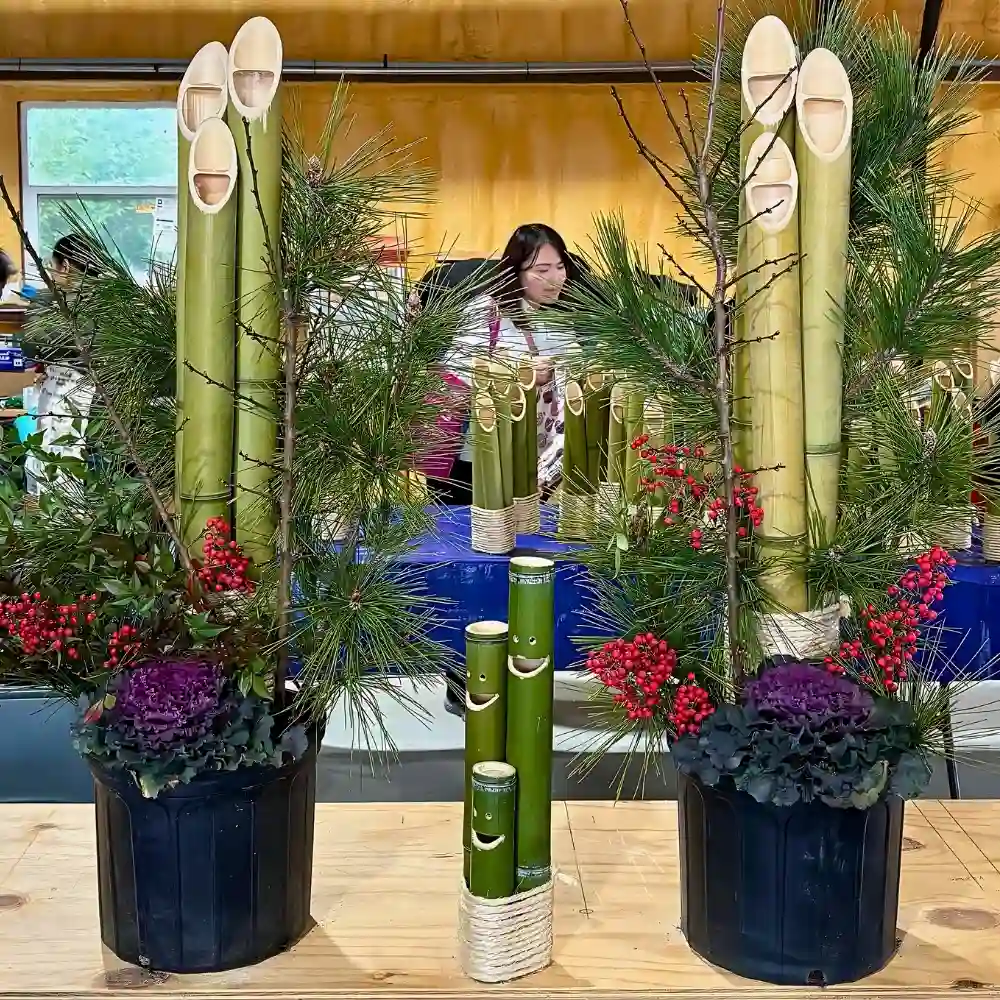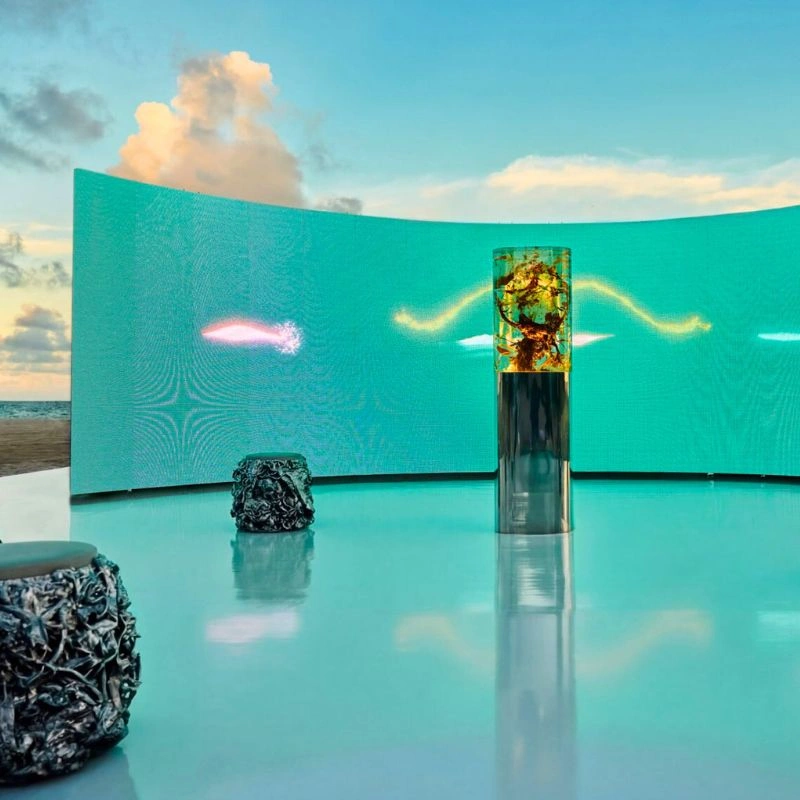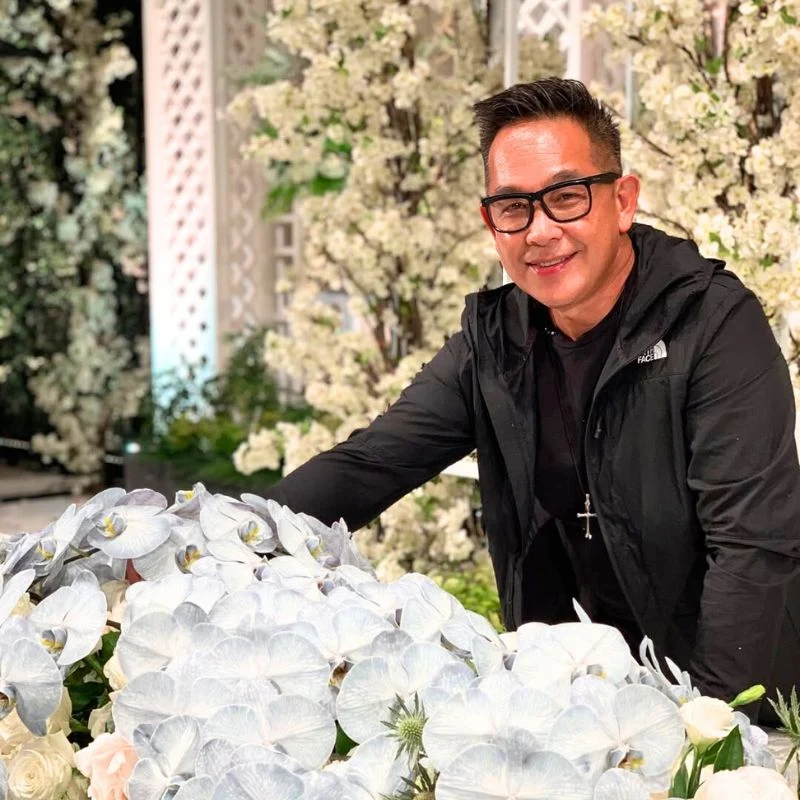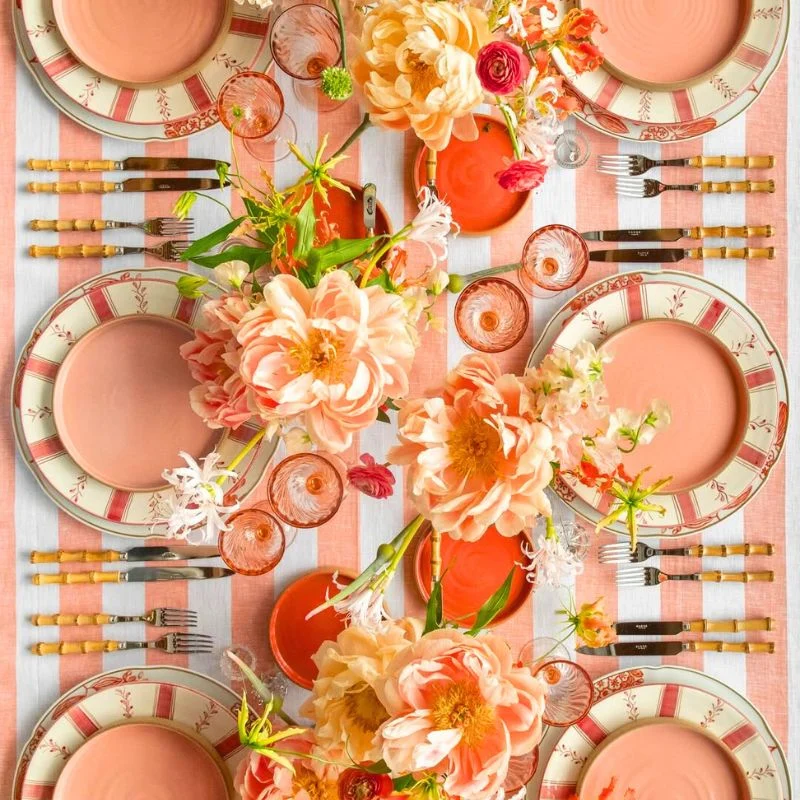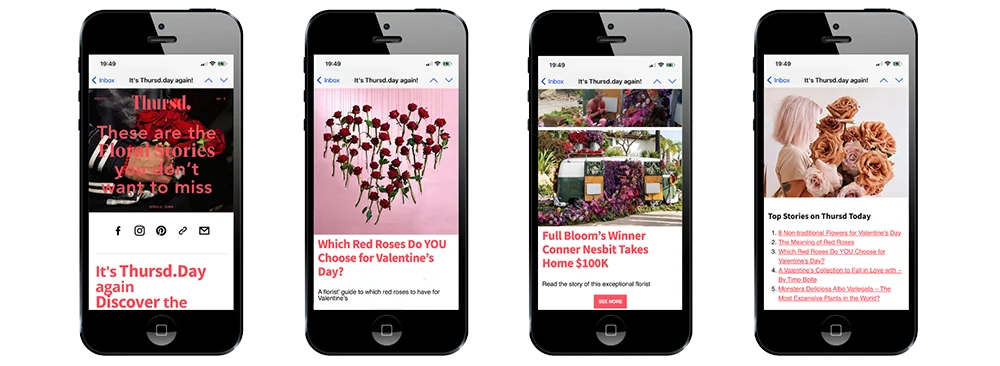The Carnival of Barranquilla is a living tradition, an ongoing collective expression of remembrance, resilience, and celebration that spans multiple generations. UNESCO has designated this carnival as a Masterpiece of the Oral and Intangible Heritage of Humanity, embodying the Caribbean spirit in all of its forms: song, dance, tradition, humor, theatricality, and color. More importantly, it is a venue in which identity is expressed through the body, costume, and visual staging.
Flowers have always played an important symbolic role at his celebration, representing life, abundance, and joy. This time, Shallima Turizo Dancur of Lottas Floral Studio was the designer in charge of making the floral dress for Barranquilla's chosen queen.
A Real Floral Dress for the Queen of Barranquilla by Lottas Floral Studio
For the 2026 Carnival in Barranquilla, Shallima created her own legacy in history by presenting, for the first time ever, a dress created independently and entirely from natural flowers, which was designed for this year’s Queen. It is a creative piece that brings together art, high floral scenography, culture, and, of course, Colombian floriculture.
Interestingly enough, this project was neither conceived nor financed by the Carnival organization itself. It emerged autonomously as an artistic initiative by the creatives involved, without any economic remuneration, solely inspired by the artistic desire to contribute something unprecedented to this historical celebration. It is a genuinely creative gesture that reveals the strength of collaboration that comes together to generate a vision and true love for this Caribbean culture.
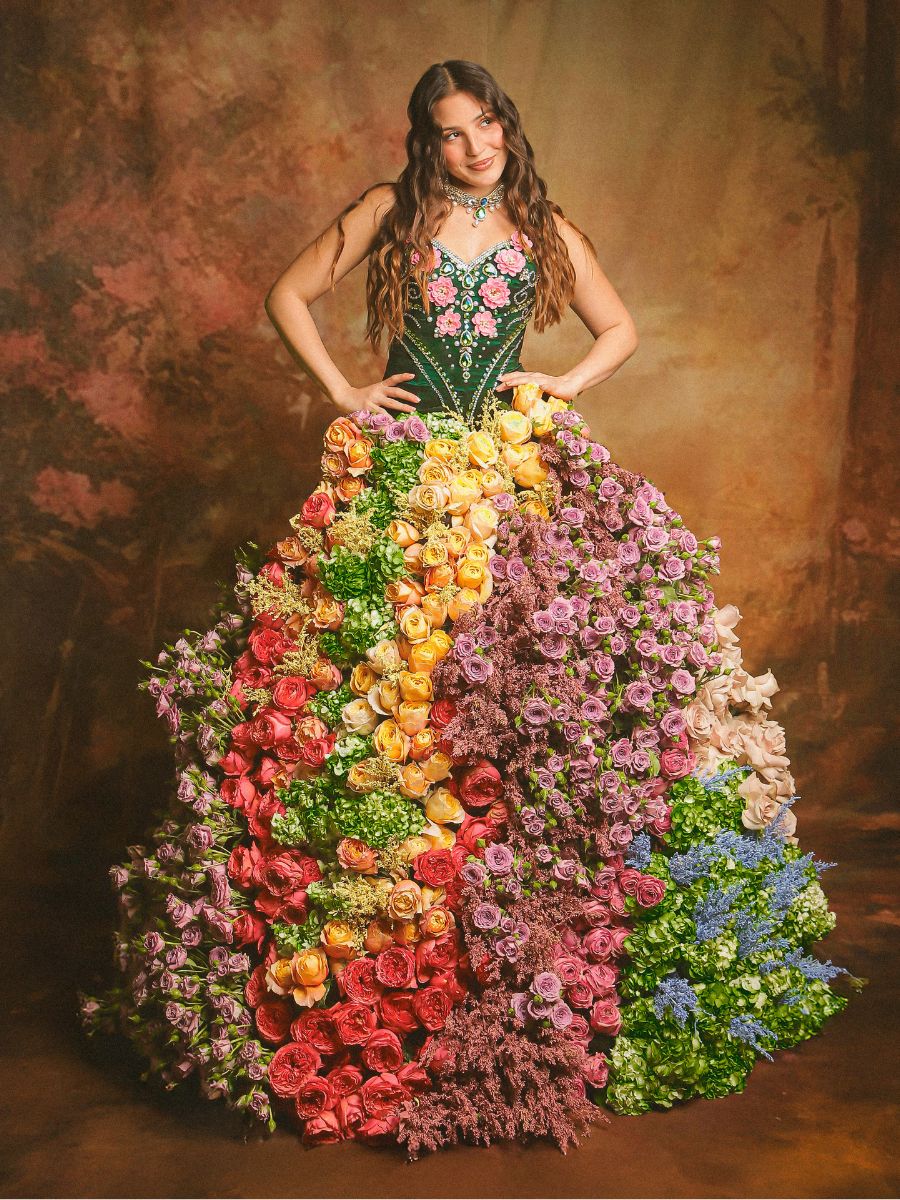
The concept was molded from an idea shared between the renowned Colombian-Argentine photographer Francisco Gallo and Shallima Turizo Dancur, the Colombian floral designer and creative director of Lottas Floral Studio. Together, they saw an unexplored opportunity to create something never seen: a dress that not only adorned the Queen but also honored the soul of the Carnival and all of its history through nature itself.
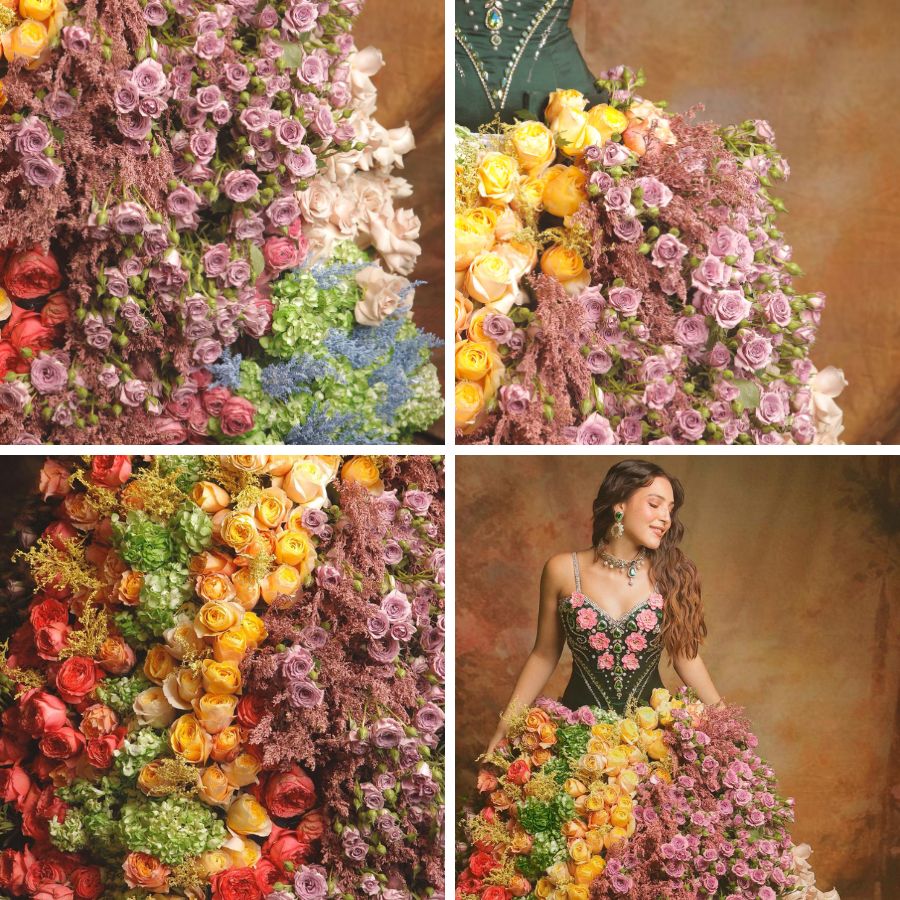
The Carnival – A Tradition From the Heart of the Caribbean
For those unfamiliar with the Carnival of Barranquilla, it is essential to understand its magnitude. Although many carnivals exist around the world, only a few have achieved exceptional international recognition for their cultural richness and historical impact.
Among them stand four fundamental celebrations: the Carnival of Rio de Janeiro in Brazil, considered the most significant event in the world; Mardi Gras in New Orleans, United States; the Carnival of Venice in Italy, celebrated for its theatrical masks; and of course, the Carnival of Barranquilla in Colombia, a festival that blends Indigenous, African, and European heritage which is today recognized as a World Heritage celebration by UNESCO.
Understanding this global context allows us to grasp the significance of integrating a floral art piece of this nature into one of the world’s most influential carnivals.
The history of the Carnival of Barranquilla is a mosaic of influences that transforms the city into an epicenter of celebration. Its origins date back to the 18th and 19th centuries, but in 1903, one of its most iconic events was institutionalized: La Batalla de Flores ( The Battle of Flowers), the most emblematic parade of the festivities, and became the center stage of the event where the city adorns, expresses, and flourishes in spectacular form.
This emblematic parade becomes a procession of floats, dance troupes featuring traditional characters, and folkloric groups, all parading along the 'Via 40' as a tribute to life and popular culture. It is also a special moment when the Carnival Queen empowers one of her principal roles: leading this celebration with the symbolic power of her attire, presence, and sophisticated energy.

Although the Carnival has evolved throughout time, its original roots remain intact. Traditional costuming continues to be a powerful tool for telling its stories, honoring traditional characters, and elevating Caribbean pride. In many traditions, the skirt, known as the 'pollera', stands out as a deep symbol of femininity and its movement along the Caribbean coast. It holds a special place and is an essential piece that stands out in the region's visual memories. Although the dress they created for this project is not a traditional style 'pollera', it shows its essence through amplitude, cadence, and the feminine strength that flows through every design.
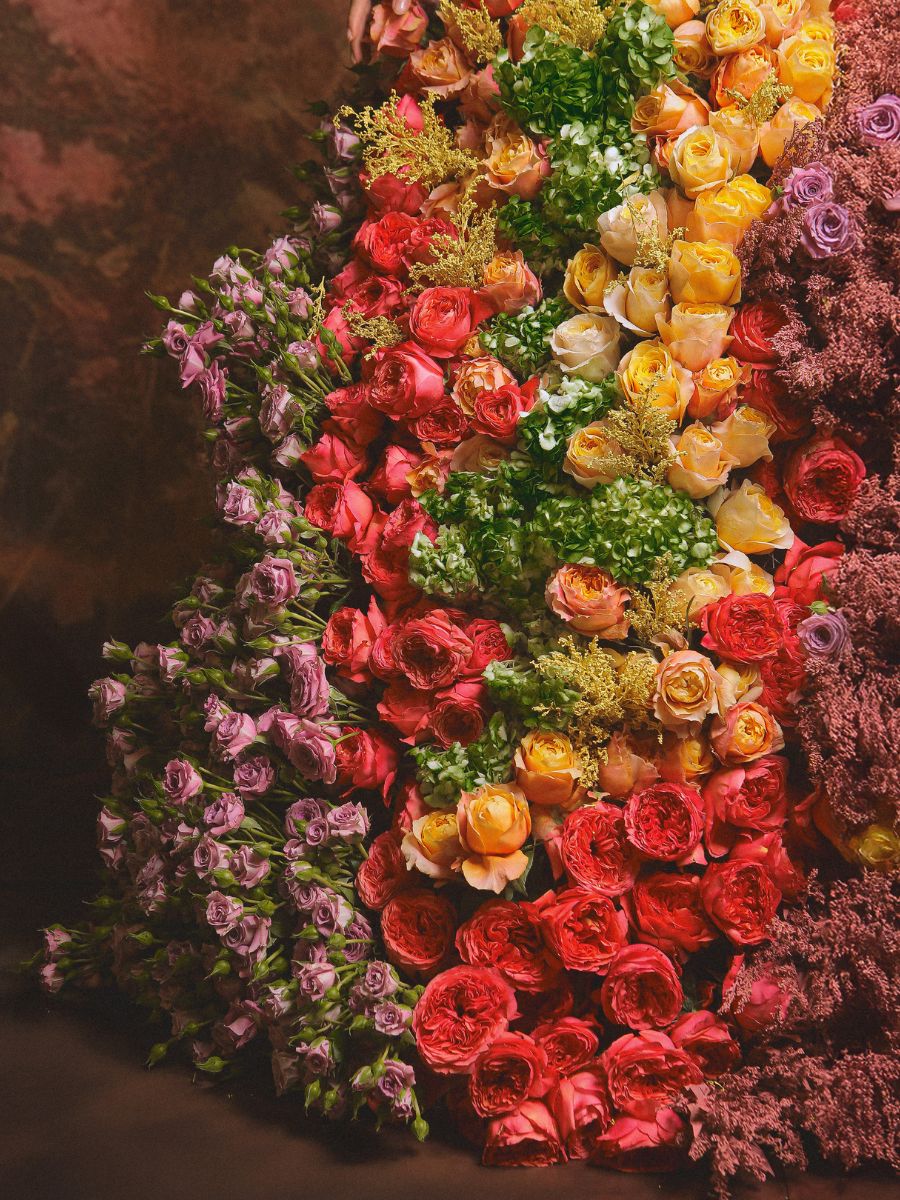
A Historic Piece - Turning Floriculture Into Fashion
Turning natural flowers into a garment is not only a decorative job. It is a technical, poetic, and deeply cultural act related to this Carnival.
Shallima created the integral floral design. It was conceived as a blooming work piece, including a skirt capable of movement, breath, and ever-telling, blending with the identity of Michelle, the 2026 Carnival Queen.
The floral varieties used were all grown in Colombia and selected for their structure, form, and movement; notwithstanding their Caribbean environment, they were also chosen for their ability to hold moisture and volume while on stage. Many of these flowers have international genetics from breeder houses that trust Colombia with their innovations, where climate and soil quality allow these varieties to reach their full potential.
Connecting this world-class floriculture with the Carnival is more than symbolic, becoming a recognition of Colombia’s place as a global leader in flower production and that its culture can, and should, maintain a dialogue with its artistic territory.

The Creative Process – Art, Design, and Territory
As mentioned earlier, the design emerges as a dialogue between photography and floriculture. Here, these professions merged with Francisco Gallo, a recognized Colombian-Argentine photographer, who embodied the conceptual vision: a Queen dressed in life, texture, petals, and movement. Together with Shallima, he translated that vision into a structural design based on technique and contemporary floral language.
Every part of the skirt and outfit, the entire structure, the floral curation, and the corset, was executed with the rigor expected for an editorial fashion process. The result was a piece of elegant, botanical architecture that serves up a cultural narrative. Michelle carried the piece with the presence the design required, interpreting her role as the Queen. Viewed through Francisco’s lens, every gesture, every movement, and every petal was perfectly shot.
Credits: Idea and concept: Francisco Gallo. Integral floral design (skirt and structure): Lottas Floral Studio / Shallima Turizo Dancur. Corset (design and construction): Francisco Gallo and Jean Robechi. Floral curation: Lottas Floral Studio. Flower varieties: Rose Shine On, Rose King Cross, Rose Candy X-Pression, Rose Peony Kiss, Silver Mikado Spray, Rose Quicksand, and Spray Rose Lucky Lilac. The Solidago Collection by Plazoleta Flowers. Farms: Wayuu Flowers and La Plazoleta (Bogotá, Colombia). Photography: Francisco Gallo.Location: Fábrica de Cultura (Barranquilla, Colombia).



